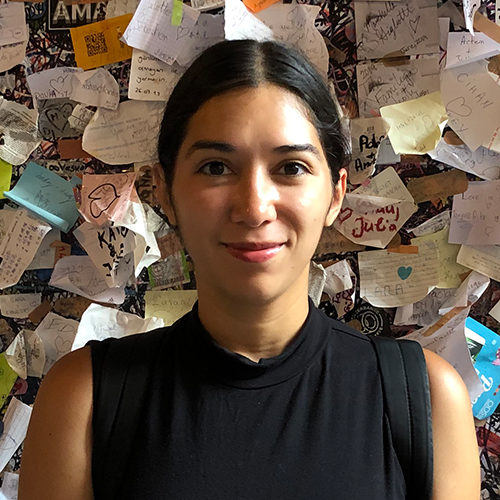 Secondary Classrooms
Engaging Short Stories about Identity for Middle and High School Students
Secondary Classrooms
Engaging Short Stories about Identity for Middle and High School Students
Boost reading comprehension and engagement with seven relatable short stories for students in grades 6-12.
With CommonLit’s digital library, you can introduce your students to hundreds of texts that explore various forms of identity, including but not limited to (dis)ability, ethnicity, and gender. These short stories for middle and high school students will inspire them to engage in thoughtful classroom discussions.
“Names/Nombres” by Julia Alvarez (6th Grade)
Soon after Julia moves from the Dominican Republic to New York City, she notices that people cannot pronounce her name correctly as they force nicknames on her. She tries to hide her Dominican identity to blend in with her peers.
Through this relatable short story, students will learn more about ethnic identity and how names can influence one’s self-perception. Students can refer to CommonLit's accessibility tools, like word definitions and translations, when the author uses high-level vocabulary or Spanish terms.
“How Autism Freed Me to Be Myself” by Rosie King (7th Grade)
Delivering a Ted Talk, 16-year-old Rosie King shares her experience with autism and addresses the stereotypes against it, explaining that autism gives her unique qualities, such as a vivid imagination. Rosie doesn’t ignore the trials that she faces, but they show her who are her true friends.
While reading Rosie’s story, students will learn more about (dis)ability identity and how its challenges draw out the best qualities in people. You can introduce your students to other short stories about disability identity from our digital library.
“Lather and Nothing Else” by Hernando Téllez (8th Grade)
Infamously recognized for murdering rebel soldiers, Captain Torres enters a barber’s shop and demands a shave. As he contemplates on killing the captain, the barber’s thoughts reveal that he is secretly a revolutionary soldier.
As students read Téllez’s gripping short story, they will learn more about political identity and how it can create conflict with others, endangering one’s own life. To measure their reading comprehension of the text, you can assign students CommonLit’s assessment questions, such as, “Why does the narrator repeatedly tell himself that he is a good barber?”
“Montreal 1962” by Shauna Singh Baldwin (9th Grade)
After the narrator and her husband emigrate from India to Canada, they are challenged to conform to Canada’s cultural norms. In this new country, the narrator’s husband is told that he must remove his turban and cut off his hair in order to get a job offer.
Through this literary text, students will learn more about national identity and emigration, as they explore the themes of belonging and conformity. You can lead a thought-provoking classroom discussion with CommonLit’s discussion questions, including, “What traditions and rituals connect you to your family? What situation would cause you to consider giving them up?”
“Safety of Numbers” by Lucy Tan (10th Grade)
Even though her strict mother reminds her to focus on her SATs, the narrator spends a lot of time sneaking out of the house and hanging out with her friend. After a collision with the narrator, her mother opens up about her life in China and her friends who died in the 1989 Tiananmen Square protest.
While reading Tan’s short story, students will learn more about academic identity and how it can influence the trajectory of one’s life. You can teach your students about the 1989 Tiananmen Square protest by introducing them to Lucy Tan’s short story “Safety of Numbers” and pairing it with Mike Kubic’s historical text “The Tiananmen Square Massacre.”

“The Danger of a Single Story” by Chimamanda Ngozi Adichie (11th Grade)
For her 2013 Ted Talk, author Chimamanda Ngozi Adichie tells a short story about a family that is presumed to be suffering in poverty but is actually enjoying life regardless of their economic status. Adichie cleverly explains the inaccuracy of stereotypes and the importance of diverse representation in stories.
As students read the text, they will learn more about socioeconomic identity and how stereotypes are misleading. Based on their similar writing styles, themes, topics, and literary devices, you can pair “The Danger of a Single Story” with supplemental texts from CommonLit's digital library, including Adichie’s other short story “Cell One.”
“Indefinite Inevitable” by Lauren Groff (12th Grade)
In this science-fiction story, the narrator brings home a baby boy, who she thought would be a girl, in a world where only boys are being born. A war erupts throughout the globe, forcing the narrator’s son and other boys to head for battle when the last generation of girls have only sons.
Students reading this short science-fiction story will learn more about gender identity and how limited gender roles can affect one’s future. As students read the text, you can encourage them to analyze Groff’s choice of words and how the author uses gendered language throughout the story to emphasize how significant gender identity is in society.
Next Steps
Are you a teacher looking for more great content on CommonLit? Browse the CommonLit Library or come to one of our webinars!
If you are an administrator looking to leverage CommonLit in your school or district, our partnerships team can help. We offer benchmark assessments, professional learning, and more!


